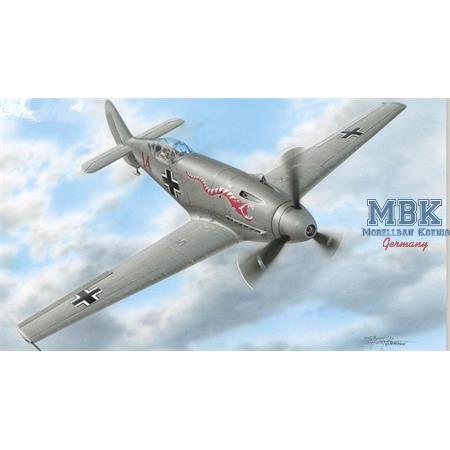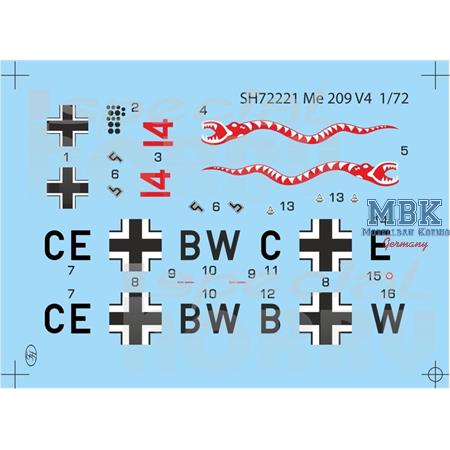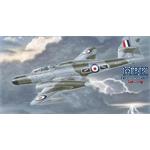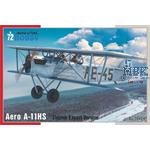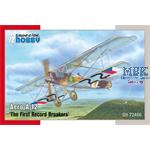Messerschmitt Me 209 V-4
SH72221
Special Hobby
1:72
These efforts, supported by the state, produced many new records, including the most prestigious, the world speed record.
Two German aviation companies competed for this record: Heinkel and Messerschmitt.
When the Messerschmitt Bf 109V-13, piloted by Dr Hermann Wurster, set the speed record on 11 November 1937, the Heinkel team had already been working on a new record-breaking aircraft, the He 100. The speed record of the Bf 109 V-13 was first broken by the famous World War II pilot Ernst Udet in the cockpit of the He 100 V2, and later, on 30 March 1939, also by Hans Dieterle, who not only achieved the land speed record, but also the absolute speed record, which until then had been held by the Italian racing float Macchi MC.72.
No wonder Messerschmitt's answer came very soon, when Fritz Wendel reached 755.138 km/h in a machine named Me 109R for the record attempt, in order to deceive the public and make them believe it was only an improved version of the standard Bf 109 fighter.
In reality, however, it was a completely different type, designed as Project 1059 and designated Me 209 by the Reichsluftfahrtministerium (RLM). This high-speed version had been designed as a small low-wing monoplane with retractable undercarriage and pilot's cockpit behind the wing.
The aircraft was equipped with a water-cooled Daimler-Benz DB601 engine with a system of wing surface coolers.
The cooling water evaporated from these radiators and the supply was only sufficient for a 30-minute flight.
The RLM ordered a total of three fast flight prototypes and several more prototypes of the planned fighter version. The first prototype Me 209V-1 (W.Nr.1185) with the registration D-INJR was taken into the air for the first time on August 1, 1938 with Dr.Ing.Hermann Wurster at the controls and only half-filled fuel and coolant tanks.
Right at the first flight problems with the engine, the cooling system, the stability and other problems occurred.
The second prototype, the Me 209V-2 (W.Nr.1186), which made its maiden flight on 8 February 1939, did no better.
Even more, it was destroyed shortly afterwards in a crash on 4 April 1939.
As the world record had already been broken by the He 100V-8 by this time, every effort was made to prepare the first prototype (Me 209V-1) for the record attempt.
The aircraft was fitted with a unique DB-601ARJ engine, its vertical stabiliser was enlarged and the aircraft was given a high gloss blue livery.
On 26 April 1939, Fritz Wendel succeeded in breaking the record.
Its top speed was not surpassed until 1969 by the improved version of the Grumman F8F-2 Bearcat Conquest I (820.824 km/h).
Although the record-breaking machine was a success, the planned military version fell somewhat short.
It was fitted with a longer-span wing, a standard engine and radiators, and also carried a 20mm cannon and two 7.92mm MGs. The wing and tail unit were modified several times, but even the last improvements did not lead to military use of the type, but only served for Nazi propaganda.
Plastic model kit
scale 1:72
unbuilt / unpainted
Schreiben Sie jetzt Ihre persönliche Erfahrung mit diesem Artikel und helfen Sie anderen bei deren Kaufentscheidung
